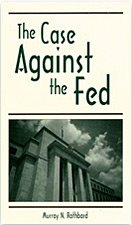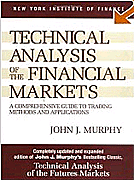Somehow in the FT: Gold primed to be 'mania asset'
By Steve Ellis
Financial Times, London
Wednesday, February 18, 2009
Gold is exhibiting all the classic signs of being in a structural bull market. On fears of inflation in early 2008, it rallied. Then, on fears of deflation in late 2008, it rallied again.
So does gold perform better during inflation or deflation?
In our view, that question is the wrong starting point. On the contrary, the rationale for owning gold, as it once again approaches the $1,000-an-ounce level, is the prospect of mounting monetary disorder.
The US Federal Reserve, having flooded the market with liquidity by more than doubling its balance sheet in less than six months, may be unable or unwilling to withdraw it in time for fear of precipitating a secondary relapse in economic activity. Other central bankers will also face intense pressures to "support" their domestic economy by weakening the currency, leading to competitive currency devaluations.
The race to the bottom in fiat currencies has begun and hard assets, particularly gold and silver, should be the primary beneficiaries.
Gold is a prime candidate to become a "mania asset" once its demand becomes chiefly financially driven as opposed to jewellery and/or industrial demand driven where its upside could be capped by "sticker shock."
In fact, gold is currently one of the few remaining major asset classes where a case could be made for it to rise in a parabolic fashion. Once the psychologically significant $1,000-an-ounce is breached convincingly, the speed of the move beyond that level could accelerate sharply. One precondition for a mania is there must be uncertainty about how the asset is properly valued which allows "new era" thinking to take hold. This is very true for gold.
Price explosion might not be imminent, however. Gold is experiencing unprecedented buying by exchange-traded funds, offset by substantially reduced jewellery demand. The fall in the Indian rupee has meant Indian gold prices have reached record levels. This is causing a slowdown in jewellery purchases (even though rupee expenditure levels are holding up, the tonnage of gold imports is suffering).
The long-term story for gold, however, is as a remonetisation play as investors lose faith in fiat currencies. Keep an eye on gold lease rates; a spike would be a good lead indicator that gold is about to punch higher as this would reflect a shortage of lendable bullion. Rising lease rates will cause gold to go into backwardation as holders of gold may not want to sell their gold forward under any circumstances a trend currently evidenced by the high physical premium being paid for gold coins.
Rising lease rates prefigured the last big move in gold back in the spring of 2007 just as the two Bear Stearns hedge funds were blowing up. Central Banks feared counterparty risk for the first time in 20 years and substantially curtailed gold lending and sales. This led to a 40 per cent rally in gold from $700 to over $1,000.
How high can gold ultimately go? A Dow Jones Industrial Average/gold ratio of 2:1 would be a good sign the bull market in gold is getting well advanced. We saw this in 1932 and 1980. Only nine years ago in 2000, however, this ratio reached over 40:1.
Arriving at 2:1 again does not necessarily mean the Dow must decline significantly from here; more likely gold prices surge and the Dow stays range-bound but volatile. Investors are looking for good risk/reward investments.
I cannot say with any confidence that gold will not be without risk and volatility but at least it offers early participants plenty of upside reward to compensate them for the wild ride.
Speaking to central bankers, this is the first time I can recall them actually favouring a high gold price. Normally they see high gold prices as a lack of trust in the financial system (not to mention their ability as central bankers). Alan Greenspan, the former Fed chairman, for example, used to target a gold price of around $400 to $500 an ounce.
Recently, the central bankers have become more enamoured of higher gold prices as it would suggest that their attempts to stave off deflation were starting to work.
Central bankers in favour of higher gold prices? Things really have changed.
-----
The writer is manager of the RAB Gold Strategy.
* * *
Financial Times, London
Wednesday, February 18, 2009
Gold is exhibiting all the classic signs of being in a structural bull market. On fears of inflation in early 2008, it rallied. Then, on fears of deflation in late 2008, it rallied again.
So does gold perform better during inflation or deflation?
In our view, that question is the wrong starting point. On the contrary, the rationale for owning gold, as it once again approaches the $1,000-an-ounce level, is the prospect of mounting monetary disorder.
The US Federal Reserve, having flooded the market with liquidity by more than doubling its balance sheet in less than six months, may be unable or unwilling to withdraw it in time for fear of precipitating a secondary relapse in economic activity. Other central bankers will also face intense pressures to "support" their domestic economy by weakening the currency, leading to competitive currency devaluations.
The race to the bottom in fiat currencies has begun and hard assets, particularly gold and silver, should be the primary beneficiaries.
Gold is a prime candidate to become a "mania asset" once its demand becomes chiefly financially driven as opposed to jewellery and/or industrial demand driven where its upside could be capped by "sticker shock."
In fact, gold is currently one of the few remaining major asset classes where a case could be made for it to rise in a parabolic fashion. Once the psychologically significant $1,000-an-ounce is breached convincingly, the speed of the move beyond that level could accelerate sharply. One precondition for a mania is there must be uncertainty about how the asset is properly valued which allows "new era" thinking to take hold. This is very true for gold.
Price explosion might not be imminent, however. Gold is experiencing unprecedented buying by exchange-traded funds, offset by substantially reduced jewellery demand. The fall in the Indian rupee has meant Indian gold prices have reached record levels. This is causing a slowdown in jewellery purchases (even though rupee expenditure levels are holding up, the tonnage of gold imports is suffering).
The long-term story for gold, however, is as a remonetisation play as investors lose faith in fiat currencies. Keep an eye on gold lease rates; a spike would be a good lead indicator that gold is about to punch higher as this would reflect a shortage of lendable bullion. Rising lease rates will cause gold to go into backwardation as holders of gold may not want to sell their gold forward under any circumstances a trend currently evidenced by the high physical premium being paid for gold coins.
Rising lease rates prefigured the last big move in gold back in the spring of 2007 just as the two Bear Stearns hedge funds were blowing up. Central Banks feared counterparty risk for the first time in 20 years and substantially curtailed gold lending and sales. This led to a 40 per cent rally in gold from $700 to over $1,000.
How high can gold ultimately go? A Dow Jones Industrial Average/gold ratio of 2:1 would be a good sign the bull market in gold is getting well advanced. We saw this in 1932 and 1980. Only nine years ago in 2000, however, this ratio reached over 40:1.
Arriving at 2:1 again does not necessarily mean the Dow must decline significantly from here; more likely gold prices surge and the Dow stays range-bound but volatile. Investors are looking for good risk/reward investments.
I cannot say with any confidence that gold will not be without risk and volatility but at least it offers early participants plenty of upside reward to compensate them for the wild ride.
Speaking to central bankers, this is the first time I can recall them actually favouring a high gold price. Normally they see high gold prices as a lack of trust in the financial system (not to mention their ability as central bankers). Alan Greenspan, the former Fed chairman, for example, used to target a gold price of around $400 to $500 an ounce.
Recently, the central bankers have become more enamoured of higher gold prices as it would suggest that their attempts to stave off deflation were starting to work.
Central bankers in favour of higher gold prices? Things really have changed.
-----
The writer is manager of the RAB Gold Strategy.
* * *
Labels: economic crisis, financial crisis, inflation















![[Most Recent Quotes from www.kitco.com] [Most Recent Quotes from www.kitco.com]](http://www.kitco.com/images/live/t24_au_en_usoz_6.gif)
![[Most Recent Quotes from www.kitco.com] [Most Recent Quotes from www.kitco.com]](http://www.kitco.com/images/live/au_go_0030_ny.gif)
![[Most Recent Quotes from www.kitco.com] [Most Recent Quotes from www.kitco.com]](http://www.kitco.com/images/live/au_go_0365_ny.gif)
![[Most Recent Quotes from www.kitco.com] [Most Recent Quotes from www.kitco.com]](http://kitconet.com/charts/metals/silver/t24_ag_en_usoz_4.gif)

















0 ΣΧΟΛΙΑ (COMMENTS):
Post a Comment
<< Home